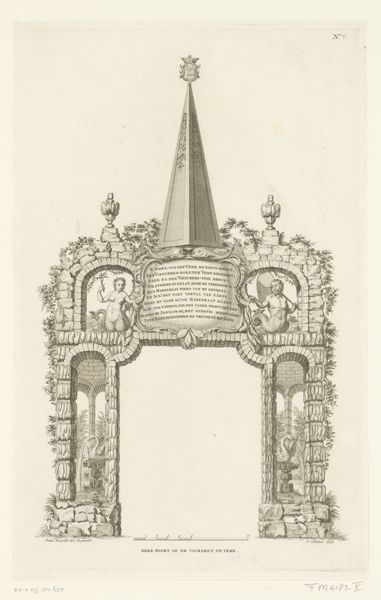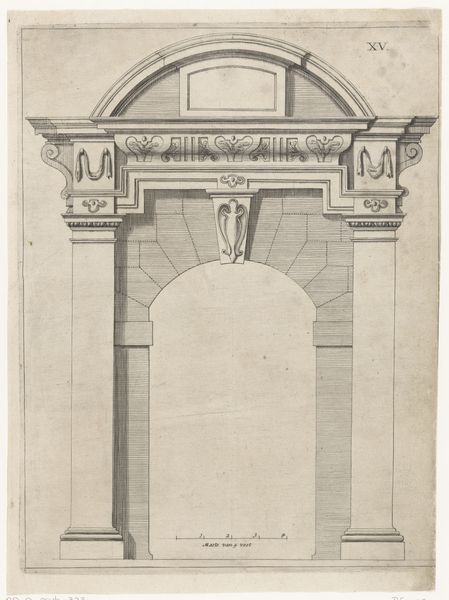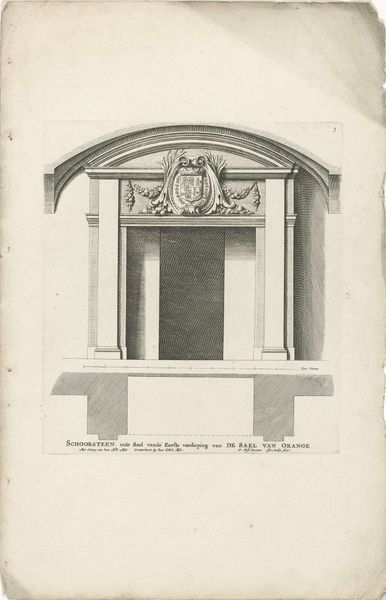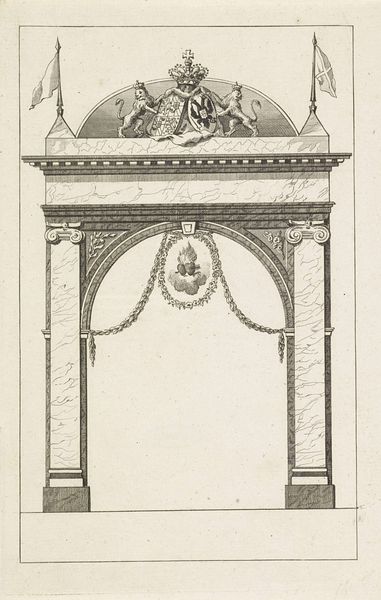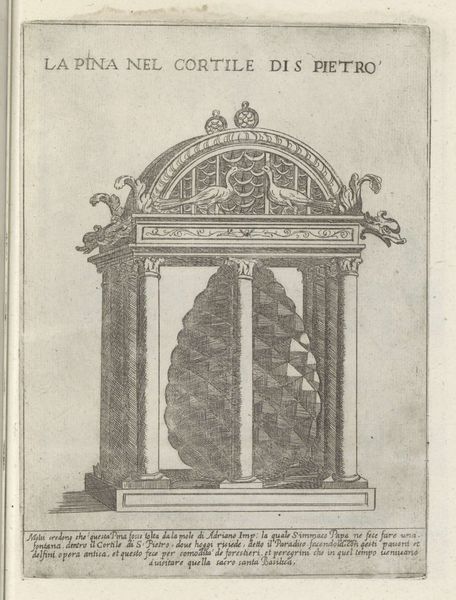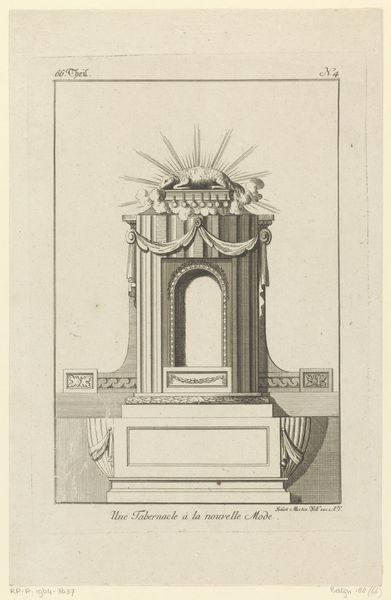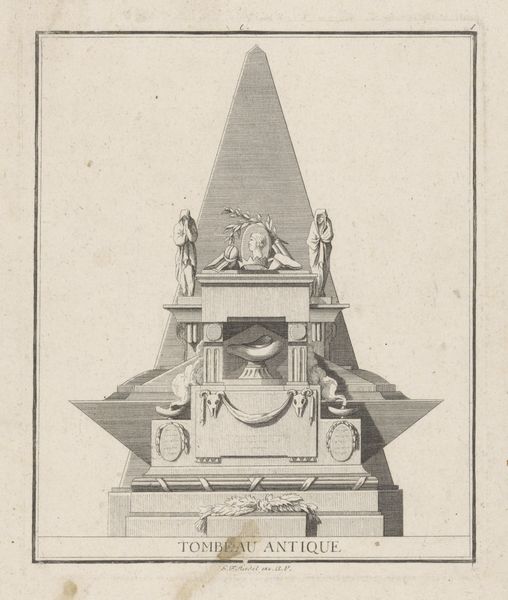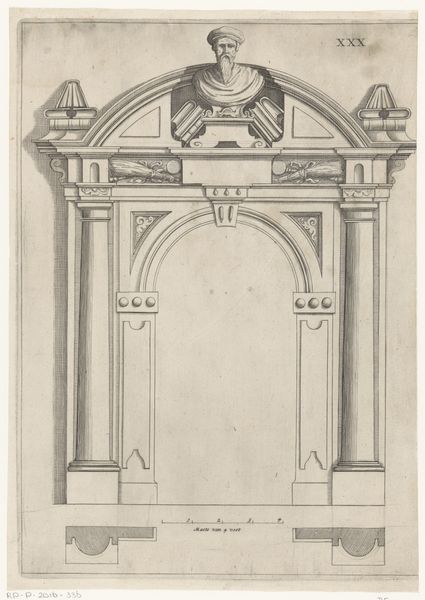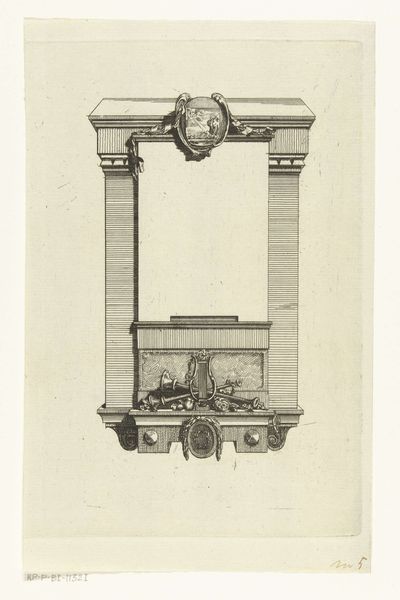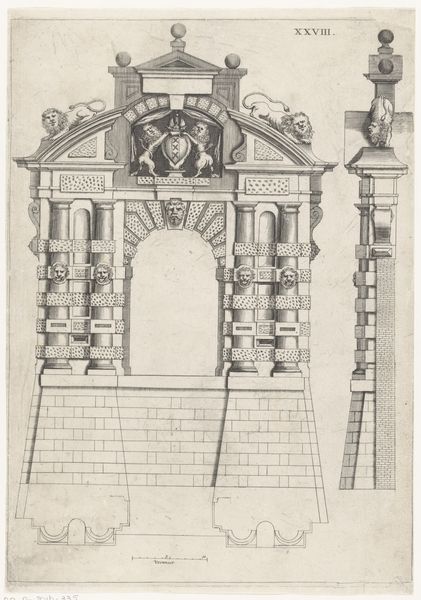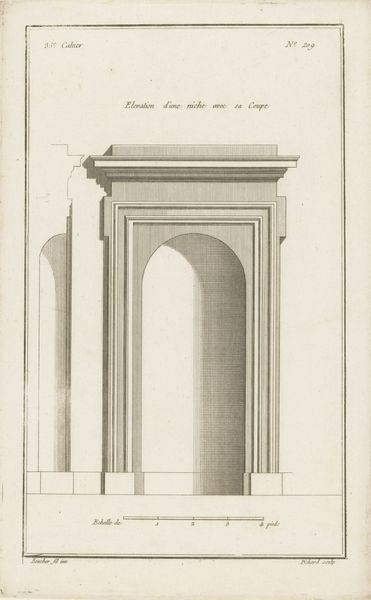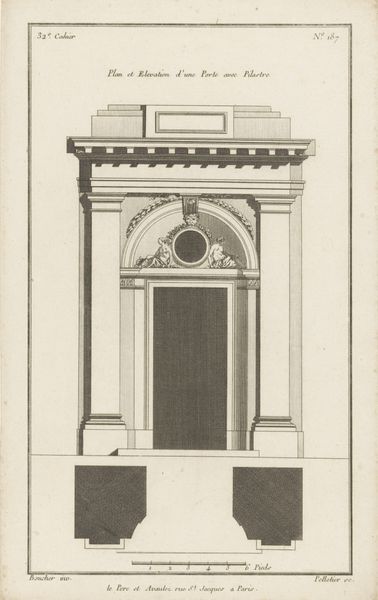
drawing, print, engraving
#
drawing
#
baroque
# print
#
old engraving style
#
cityscape
#
engraving
Dimensions: height 355 mm, width 212 mm
Copyright: Rijks Museum: Open Domain
Curator: Welcome. Here we have an engraving from 1751, titled "Erepoort op de Vismarkt," or "Triumphal Arch at the Fish Market," crafted by Caspar Jacobsz. Philips. Editor: Oh, it's striking! Such stark geometry combined with the flourishes of what feels like baroque dynamism… it almost hums with a kind of formal, almost austere energy. Is this actual architecture? Curator: That's precisely the tension in its design! Note the Doric-inspired solidity of the base juxtaposed with the ornate details and the pointed apex. The archway frames what, in reality, would have been the bustling chaos of a fish market. Editor: The choice to represent such a quotidian, aromatic space with these highfalutin visual tropes feels somewhat humorous. A bit like giving a state dinner to your dog! What is it with that central space that’s framed? Curator: Precisely! Semiotically, that blank space invites the viewer to consider what elements the Fish Market might represent in a broader sense—sustenance, commerce, the very lifeblood of the city itself, maybe, that the blank represents emptiness or an opportunity. It draws attention to the activity it usually has. Editor: It also makes me question the social function of art, as this triumphal arch is rendered on what feels like a blueprint. Is Philips poking fun at monumental art? This makes one ask what and how it communicates as a print rather than an archway Curator: You are approaching this correctly, this challenges how architectural structures, with their implied grandeur and permanence, could be represented so ephemerally, transformed through print and consumed quite differently. It allows one to possess its structure symbolically, if not literally, creating its own reality that echoes architectural intent while it can be viewed with coffee or used for other domestic purpose. Editor: It does feel slightly mischievous. A playful commentary, or at least, a multi-layered one. Curator: It underscores that even the most meticulously crafted images function as more than mere visual documents; instead, it reflects larger cultural conversations about permanence, transience, and the values society places upon the most quotidian aspects of existence. It represents the intersection of material culture with the everyday pulse of 18th-century life. Editor: And it continues to intrigue across centuries. A compelling and strange piece. Curator: Yes, a lasting reflection of how artistic minds perceive the world around them, using visual language to provoke thought and question expectations.
Comments
No comments
Be the first to comment and join the conversation on the ultimate creative platform.
